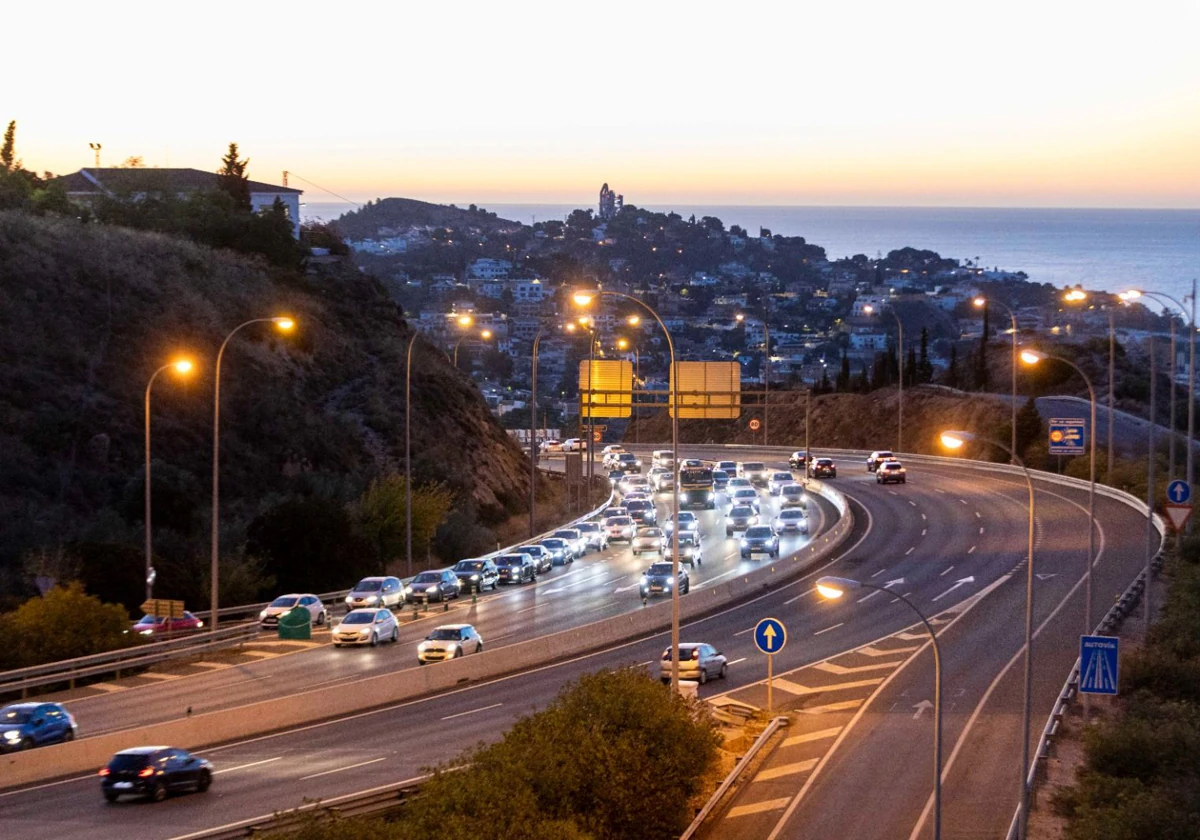Costa mayors call for reversible lanes to deal with gridlock around Malaga city's eastern ring road
The trio have demanded urgent measures from the Spanish government to alleviate traffic jams until the long-term projects in the province are completed
The problem of gridlock on Malaga's Ronda Este at rush hour requires urgent measures, beyond the long-term expansion projects being studied by Spain's central government. Following the latest reports in SUR on the problems at the accesses to Cerrado de Calderón and the surrounding area, mayors from the area have called for a focus on the possibilities for short-term improvements which can be carried out by the Directorate-General of Traffic (DGT) with its own resources, before the situation becomes unbearable.
"I am afraid that the problem is not only the Cerrado de Calderón access, but also Pinares de San Antón and El Palo, and the Limonar exit. In general, the whole Ronda Este is in a state of gridlock. And the worst thing is that the residents of the whole eastern part of the province have been warning about it for years". This is the first reaction of Francis Salado, mayor of Rincón de la Victoria, one of the most affected municipalities, and president of Malaga's provincial authority, the Diputación de Málaga.
Salado has called for provisional alternatives to mitigate congestion and reduce the inconvenience to drivers. "It is urgent and inexcusable that the government, both the ministry (of transport) and the DGT, study and apply measures", among which he cites the possibility of implementing temporary lanes, reversible lanes, putting the dual carriageway from La Araña to El Palo into greater use, modifying roundabouts and traffic preferences depending on the time of day, even limiting the transit of heavy vehicles at certain times.
Urgent measures
"The feasibility of this type of measures, which are applied all over the world, should and can be studied... Why not in Malaga? What is totally unacceptable is that the DGT and the government continue to look the other way. This is not the fault of the people of Malaga, who have the freedom and the right to live where they want, nor of the drivers who drive alone in the car, nor of the rest of the administrations. It is entirely the responsibility of a ministry that has not made a single investment in roads in six years and has systematically ignored alerts, warnings and traffic figures".
"The ministry of transport is very late with the studies to widen the A-7 to three lanes between Malaga, Rincón and Vélez-Málaga, and also with the study of the second ring road, the need for which is unquestionable. And they have given themselves a period of one year to end up telling us that there is a traffic problem in the eastern area... everyone knows that," Salado said.
"The government is very late with the studies to widen the A-7 to three lanes and the second ring road".
In the same terms, Jesús Lupiáñez, mayor of Vélez-Málaga, the other large municipality of the Axarquía which suffers serious problems in road connections with Malaga city, given that many of its towns (such as Almayate, Benajarafe, Chilches and Torre del Mar) are already part of the metropolitan area.
"It is important to make one of the entry lanes to Malaga reversible, as is done from Motril to Granada, and to establish an alternative lane to enter the city, which we already know the traffic jams it generates", said Lupiañez.
"We are too late, we have a problem and we need all the administrations, especially the state, because these are national roads, to take on these projects which are on the table, such as the new bypass from Vélez to Malaga and other alternatives".
Malaga city hall has also pointed out that the population of the eastern area has grown significantly "without the capacity of the A-7 junctions having been increased in more than 30 years".
"It is necessary for the ministry of transport to adopt urgent measures, in the short, medium and long term, which must include, in the first instance, the promotion of public transport. But also by a firm commitment to new high-capacity infrastructures such as the Vía Perimetral, for which Malaga hall developed studies in 2017".

